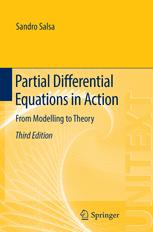

Most ebook files are in PDF format, so you can easily read them using various software such as Foxit Reader or directly on the Google Chrome browser.
Some ebook files are released by publishers in other formats such as .awz, .mobi, .epub, .fb2, etc. You may need to install specific software to read these formats on mobile/PC, such as Calibre.
Please read the tutorial at this link: https://ebookbell.com/faq
We offer FREE conversion to the popular formats you request; however, this may take some time. Therefore, right after payment, please email us, and we will try to provide the service as quickly as possible.
For some exceptional file formats or broken links (if any), please refrain from opening any disputes. Instead, email us first, and we will try to assist within a maximum of 6 hours.
EbookBell Team

4.7
56 reviewsThe book is intended as an advanced undergraduate or first-year graduate course for students from various disciplines, including applied mathematics, physics and engineering. It has evolved from courses offered on partial differential equations (PDEs) over the last several years at the Politecnico di Milano. These courses had a twofold purpose: on the one hand, to teach students to appreciate the interplay between theory and modeling in problems arising in the applied sciences, and on the other to provide them with a solid theoretical background in numerical methods, such as finite elements. Accordingly, this textbook is divided into two parts. The first part, chapters 2 to 5, is more elementary in nature and focuses on developing and studying basic problems from the macro-areas of diffusion, propagation and transport, waves and vibrations. In turn the second part, chapters 6 to 11, concentrates on the development of Hilbert spaces methods for the variational formulation and the analysis of (mainly) linear boundary and initial-boundary value problems.The third edition contains a few text and formulas revisions and new exercises.